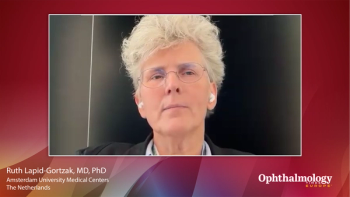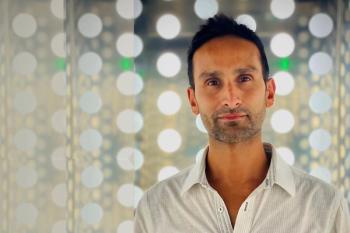
Studying teprotumumab adherence in patients with thyroid eye disease
Dr Raymond Douglas discusses real-world adherence to teprotumumab as a treatment for thyroid eye disease.
Dr Raymond Douglas sat down to discuss his study analyzing the real-world adherence to teprotumumab (TEPEZZA; Horizon Therapeutics) as a treatment for thyroid eye disease (TED). While 90% of patients completed the therapy successfully, about 10% discontinued due to adverse effects. Investigators are digging into which of these effects are disrupting the treatment.
Dr Douglas is an board-certified aesthetic and reconstructive oculoplastic surgeon at Cedars-Sinai Medical Center. Dr Douglas contributed to the body of research that led to using teprotumumab as a treatment for TED. He continues to research the topic to improve adherence.
Video transcript
Dr Douglas: Hi, I'm Raymond Douglas and I am from Cedars-Sinai Medical Centre, and we're based in Los Angeles. And today I was speaking about the real-world adherence for teprotumumab treatment.
And you know, it's really a fun study to do because we did the Phase 2 and Phase 3 clinical trials, which demonstrated the teprotumumab, reversed the proptosis, and improved patients and thyroid eye disease. But one of the things we really wanted to know is whether the adverse events and whether patients in the real world were following through on this therapy, the same way that they did in the Phase 2 and Phase 3 clinical trials. And so that was our poster today.
And the poster demonstrated that the adverse events were very similar to what we saw in the clinical trials in Phase 2 and Phase 3, which sometimes you don't see that in the real world versus clinical trials. And that over 90% of patients finished the whole course of therapy during this study period in time.
And there were dropouts, and there were adverse events reported and that led to these dropouts. But what was reassuring is that those were the same adverse events that we saw during the trial, which namely were muscle spasms, fatigue, nausea, some diarrhea, and those were the—accounted for the vast majority of adverse events that led to discontinuation.
So overall, you know, we were pleased to see that the real world is tending to coalesce with clinical trials—and how often does that happen?—but that 90% of our patients were actually able to finish these therapies, and there was very similar to what we saw in early clinical trials.
So the next step is to really look at and dive deeper into these adverse events. Because we want to know, you know, in those 10% of patients, we didn't know exactly which adverse event led to their discontinuation. We know that there was a group of them, but we want to know why and how we can help to overcome that [and] how we can help with any of the pain points that these patients are experiencing during their treatment.
Note: This transcript has been lightly edited for clarity.
Newsletter
Get the essential updates shaping the future of pharma manufacturing and compliance—subscribe today to Pharmaceutical Technology and never miss a breakthrough.

















































